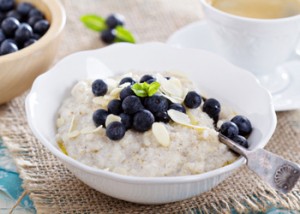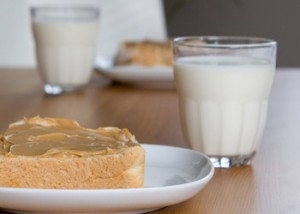A Beginner’s Guide to Race Day Nutrition
Read any article about triathlon race day nutrition and it’s easy to get confused. Between carbs and protein, millilitres and grams, longer races and sprints, and conflicting research studies, there is a lot to process. Trying to weed through it all, nutrition may become even more daunting than that first open water swim.
We’re going to try to make it easy. Nutrition is extremely important, but it doesn’t have to be quite so complicated!
Pre-Race Meal
 You’re nervous. It’s race morning and your stomach is full of butterflies… how can you possibly eat? Stick with a breakfast that you’ve eaten during training (and that has had good results!) Don’t overdo it. If you typically drink coffee or tea and it hasn’t bothered your stomach in training, don’t decide to give it up now. The caffeine boost can actually help delay fatigue and enhance performance.
You’re nervous. It’s race morning and your stomach is full of butterflies… how can you possibly eat? Stick with a breakfast that you’ve eaten during training (and that has had good results!) Don’t overdo it. If you typically drink coffee or tea and it hasn’t bothered your stomach in training, don’t decide to give it up now. The caffeine boost can actually help delay fatigue and enhance performance.
Try to finish your breakfast at least two hours before the race start to allow for digestion time. If you really can’t stomach solid food, try an easy-to-digest smoothie (though not a new recipe- nothing new on race day!) Finally, keep sipping water up to the start to stay hydrated!
Do you need to eat while racing?
For training or races less than an hour, water is perfectly adequate. Even for sprint distance races, there is no real need to consume carbohydrates, but it doesn’t hurt to sip a sports drink (which contains carbs) on the bike or during the run, especially if you anticipate that your finish time will be longer than 1 ½ hours.
For Olympic distance or longer races, carbohydrates become more important. The reason it gets complicated is that you need to ingest enough carbohydrates and fluid without taking on so much that you upset your stomach. Ideally, around 250 carbohydrate calories per hour is a good balance, though some athletes require less. How you consume these calories is up to you, but gels and energy drinks are formulated to make calorie consumption simple while being easy on your stomach.

Two gels plus a few good swigs of energy drink per hour will give you the 250 calories, but be sure to supplement each gel with about 300 ml of water for additional hydration and to keep your stomach happy. A good trick is to mark your water and sports drink bottles in 300 ml increments with a bold water-proof marker. The last thing you need on race day is to have to calculate what a millilitre is!
If you can’t stomach gels or need a little variety, some solid food is fine, but it is important to test these during hard training sessions. You may be able to happily munch on a banana while on the bike but may find that you can only stomach gels or sports fluids while running.
When should you eat?
The best place to start replacing calories is on the bike. Obviously, trying to eat and drink while swimming is not only difficult, but you will have enough calories from your morning meal to get you through your swim. Try sipping a little water as you transition from swim to bike to help balance your stomach. Once on your bike, allow yourself to settle a bit. Get your heart rate and breathing to a comfortable place and then start trying to replace some calories. For most people it is much easier to eat/drink on the bike than while running, so it’s important to execute your nutrition plan as much as possible on the cycling segment.
Practice!
You can have the best nutrition plan in the world, but if you haven’t tried it before the race how do you know that it works for you? It is vital that you try the fluids, gels or foods that you plan to race with prior to race day. Experiment with the amount of calories that you take in (and how you take them) during intense training sessions to discover what you like, what you don’t and what works best for you. And remember, there’s still a chance that your body will behave differently on race day, so try to be flexible and have a back-up plan.
What about protein?
 Unless you are racing in long course events (half-Ironman or longer), you can keep things simple by ingesting only carbohydrate energy.
Unless you are racing in long course events (half-Ironman or longer), you can keep things simple by ingesting only carbohydrate energy.
When protein does become very important is post-race (or post-workout) recovery. There is a relatively small window that is optimal to replenish depleted muscles- ideally, less than 45 minutes.
To put it technically, you should be eating a 1:4 ratio protein-to-carbohydrate meal to start your muscles on the road to recovery. Since the healthiest foods don’t come with a nutrition label spelling out protein-carb ratios, a good bet is rice or a baked potato with protein (beans, chicken or tuna), toast with nut butter, or even chocolate milk. If you won’t have quick access to balanced food, try packing a recovery drink. Many are available on the market in powder form, pre-formulated to offer the perfect balance of protein and carbohydrate calories.
When it comes to race day nutrition, the most important thing to remember is that everyone is different. Following a few simple guidelines and finding during training the balance that works best for you is the key to your race day best!